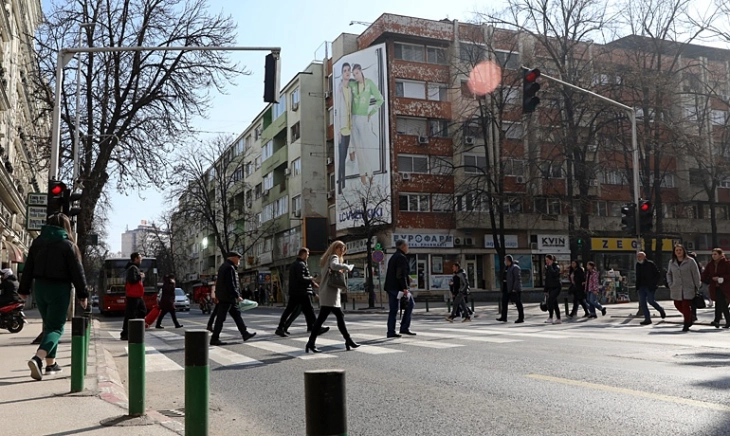Unhealthy lifestyle and tobacco consumption major risk factors for mortality in North Macedonia

Skopje, 15 September 2022 (MIA) – Tobacco and unhealthy diets are the major risk factors for mortality in North Macedonia. Unhealthy lifestyles are major drivers of mortality, while the high prevalence of smoking, high blood sugar levels and high consumption of sugar, salt and fat are estimated to account for nearly three quarters of deaths in 2019, according to the World Health Organization’s latest report on North Macedonia.
The report is one of the fourteen national reports on countries which are not EU member states but are a part of the WHO’s European region.
The “Improving the Health of the Population” section of the report states that the life expectancy in North Macedonia is increasing, however it remains below the average of the WHO’s European region.
“The latest mortality data reported by North Macedonia to WHO refer to 2013. According to this data, life expectancy at birth stood at 75.5 years. Although this was below the averages for South-Eastern Europe and the WHO European Region, it was higher than more up-to-date life expectancy figures for some EU member states,” states the report.
Cardiovascular and cerebrovascular diseases and cancers are the leading causes of adult mortality. In the period between 2000 and 2017 there was an increase in mortality due to diabetes, specific cancers, in particular lung cancer, colorectal cancer, pancreatic and prostate cancer, as well as Alzheimer’s disease.
The report states that North Macedonia ranks among the countries with the highest tobacco smoking prevalence worldwide and the highest average number of cigarettes smoked among adults and young people. However, according to the report, smoking rates have declined in recent years, most likely due to the 2010 public places smoking ban.
On a more positive note, according to the WHO, alcohol consumption among adults per capita (3.8 liters) was below the average of the WHO European Region.
An increase in obesity rates among adults has been noted. Almost two thirds, or 64.9 percent of men and more than half of women, 51.2 percent, were overweight in 2016. Another worrying fact is that half of the adult population is not physically active and only 8.3 percent of adults practice 150 minutes of moderate physical activity per week, which is below the EU average.
Obesity has been noted among 7-year-old children as well, which has increased in the period between 2010 and 2019, especially among girls, where it increased from 30.9 percent to 37.8 percent.
According to the WHO, air pollution is a main risk factor for respiratory diseases among children. The country has one of the highest levels of air pollution in Europe, in particular in the capital Skopje. The report states that in 2019 about one in seven deaths (13.7 percent) in the country was estimated to be due to poor air quality.
Prevalence of respiratory conditions, not including infections or pneumonia, is particularly high among children between 0 and 14 years. In 2019, 39.8 percent of morbidity in children was related to diseases of the respiratory system. The report states that pre-school age children in urban settings are twice as likely to acquire diseases of the respiratory system than those in rural areas.
Fourteen new reports were presented at the 72nd session of the Regional Committee for Europe in Tel Aviv, Israel on September 12, 2022. Each report contains the latest information on the country’s health system organization, financing strategies and financial security, access to resources and services, improving the health of the population, antimicrobial resistance strategies and progress towards the fulfilment of the WHO’s European Programme of Work. ad/ba/







